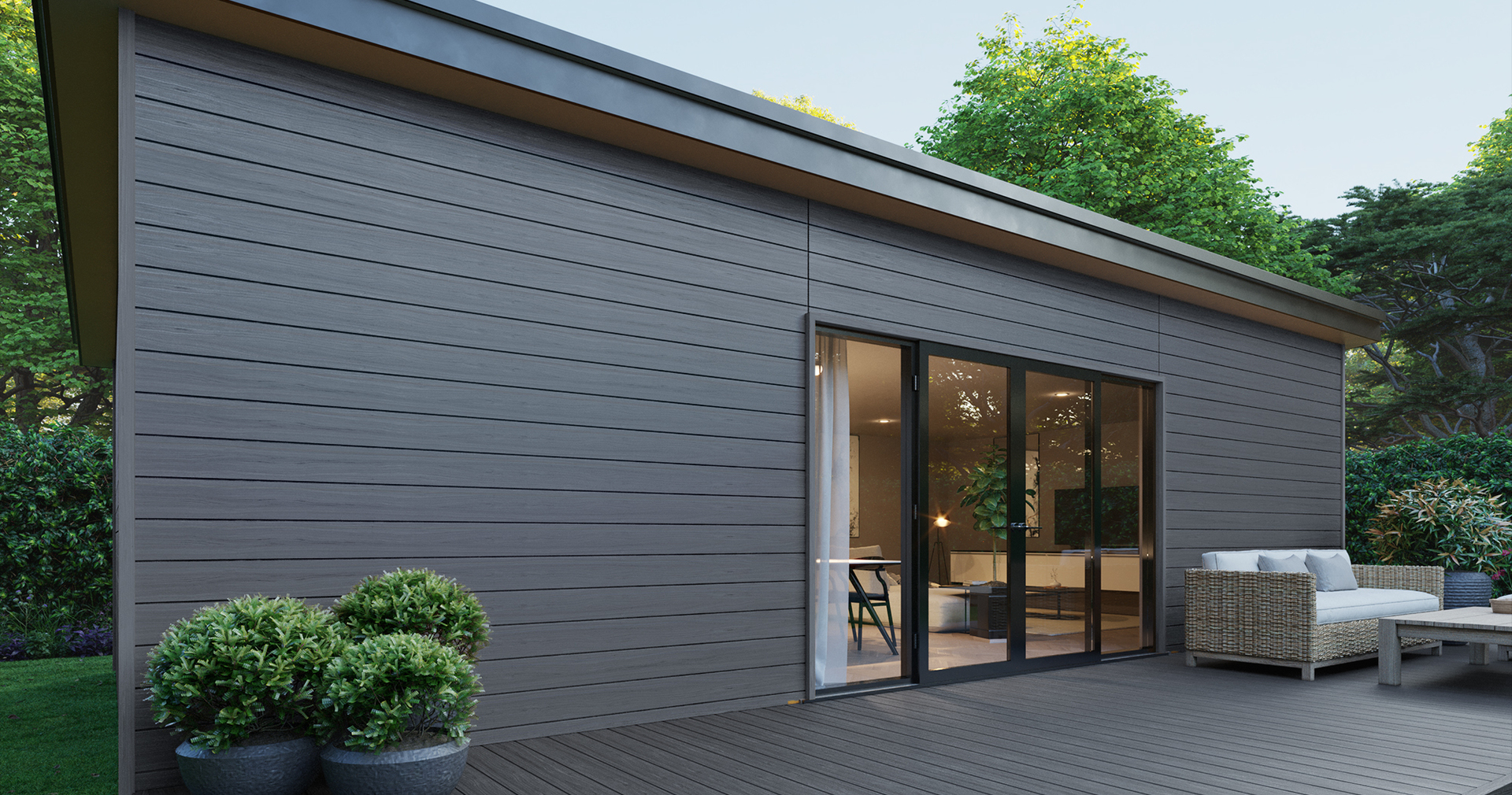Your Essential Guide To Garden Rooms
Posted on 29th March 2023
As we head into spring, it's the perfect time to focus on garden rooms, whether it's sprucing up an existing garden room, making your shed ship shape, or constructing a brand new room to enjoy your outdoor space in.
An increasingly popular way of getting extra space at home, garden rooms are cost-effective, as they generally require no planning permission and can be built quickly, allowing people to begin using their space sooner rather than later. Furthermore, there is a wide range of styles and sizes available to choose from meaning you can find the perfect garden room to suit your lifestyle.
Whether you would like to turn it into a workspace, a recreational area, or somewhere to exercise, turning your outdoor space into a garden room can be an ideal solution. This guide will give you all the information you need to consider before creating your own garden room.
Why have a garden room?

Garden rooms allow homeowners to create extra living space without a full-scale extension. Instead of having an annex built or converting part of the house into any other usable space, garden rooms offer a simple and cost-effective alternative. These buildings come in many shapes and sizes, so they can be tailor-made to fit into even the smallest of gardens.
Garden rooms can be built for a wide range of purposes, including:
Home offices
Workshops
Outside bars
A space for entertaining family and friends
Home spas
Playrooms
A gym, or yoga or fitness studio
A games room, craft room, memorabilia room, or personal library
The possibilities are endless when it comes to what your garden room can become!
How much do garden rooms cost?
The cost of a garden room can vary significantly depending on the size, type, specification, and materials used.
It's important to research the market carefully as prices can range from £3,000 for a simple small wooden cabin to be purchased and installed, to £20,000 and above for a bespoke garden room made to your exact requirements and using features such as floor to ceiling glazing, cedar cladding or bifold doors. However, there is really no upper limit depending on the size of the room and your design choices.
You could also consider putting your own design together and building and installing the room yourself.
Do you need planning permission for a garden room?

Garden rooms are classed as outbuildings and in most cases will not need planning permission, providing you have permitted development rights at your home or the area you live in. You might not have permitted development rights if your home is a listed building, is in a designated area (such as a National Park, area of outstanding natural beauty, a conservation area, or a World Heritage Site) or is a flat or maisonette.
To construct a garden room under permitted development the following rules will need to be met:
Your garden room or log cabin cannot be in front of your home.
The total area of all extensions, sheds, and outbuildings, including your proposed garden room, must not cover more than 50% of the total area of land around your house.
Your garden room must be single-storey and less than 3 metres high, or 4 metres with a dual-pitched roof.
The maximum eaves height must not exceed 2.5 metres above ground level.
It cannot have a balcony, veranda or raised platform.
It cannot be used as self-contained living accommodation.
We would always recommend that you check with your local planning office before starting the construction or installation of any garden room.
Building regulations
Building regulations are in place to help ensure that any commercial or residential buildings, including garden rooms, meet minimum safety and structural requirements. Whether these regulations apply to a new garden room depends on several factors.
Firstly, the size of the building must be considered; if it is under 15 square metres then no regulations are required. If, however, the space is between 15 and 30 square metres then regulations may still not be necessary if the garden room is more than one metre from your boundary, has no sleeping accommodation, and is constructed from non-combustible materials.
If sleeping accommodation is included in the garden room, or it is attached to your main home, then no exemptions from building regulations are available, regardless of the size of the building.
If building regulations do apply, then gaining the required approval can be done through either your local building control or a private approved inspector. We would always advise that you check with such an expert before starting the construction or installation of any garden room.
How long will construction take?

As with cost, the length of time planning and constructing a garden room will take, will vary according to several factors.
A modular build can be constructed quickly off-site before being erected on your property in as little as a few days. This is great for those who want quick and minimal disturbance to their home.
Those who prefer a more bespoke design may opt for a customised construction. Although these options may not offer the same cost savings that come with modular packages, they can provide the quality and design you desire with the benefit of increased longevity. Depending on the size and complexity, these custom builds can generally be completed in 4-6 weeks, although smaller shed-like structures could likely be completed within a week or two.
Do Garden Rooms Need Foundations?
To ensure your garden room stands the test of time, it is important that the correct foundations are built. There are several different ways of constructing foundations for garden rooms, and which method should be used will depend upon the size and weight of the building, as well as budgetary constraints.
Your supplier or builder should be able to advise on the most suitable type of foundation for your needs. Many package suppliers and modular building specialists have their own recommendation for foundations. It is also worth checking whether the price of any necessary foundation work is included in any quotes you receive.
A common type of foundation for garden offices is concrete slab foundation, which are best suited to level ground areas. This type of foundation creates a stable base layer with strong concrete supports that can easily take the weight of a building made from steel or timber frame construction. Concrete slabs can help keep out frost if they are deep enough in parts prone to frost heaves, making them an ideal choice in colder climates where snow is likely to fall during winter months.
As with all types of foundations, check with an engineer or surveyor if you have any doubts about the suitability for your garden building.
Getting Electrics and Water to Garden Rooms

Having a garden room is a great way to give yourself a private place to work, play or enjoy the outdoors. But to make the most of such an outdoor space, you will need to arrange for an electric connection, and possibly water and waste connections, for your room.
Firstly, it is important to consider how an electrical supply gets connected to your garden room. If you opt for a modular garden room then many come with cables already installed for lighting, power, and heat so that these can be easily connected to the mains supply.
Additionally, it is essential to make sure the electrical wiring in your garden room is up-to-code with necessary building regulations.
It is also worth looking at running internet cables from your house so that you have a good Wi-Fi connection within your garden space, especially if you are using the garden room for a home office.
Depending on what you are using your garden room for, it may also be worth considering have running water in there.
If your garden room is located far from an existing mains supply connection, it can sometimes be difficult and expensive to connect it up, especially if there are no nearby connections available. Purchasing a water tank with manual pressure systems could be an economical investment for your garden room setup, as it will provide easy access to water whenever you need it!
Heating Garden Rooms
If you want to make the most use out of your garden room all year round, then heating is essential to ensure it remains warm and comfortable.
One popular option for heating a garden office is electric convection heaters as these simply need to be plugged into an electricity supply and can quickly heat up a space. They come in both wall-mounted or floor-mounted units with added features such as timers or thermostats for greater control over the temperature.
If you prefer something a bit slower but much safer, then electric radiators are an excellent choice as there are no exposed elements or hot parts that could potentially be hazardous for children or pets.
Whichever type of heater you choose for your garden room, it will significantly increase its use throughout the year by providing comfortable temperatures both during colder months and well into summer too!
Insulating your garden room is also essential for keeping it warm in the winter and cool in the summer months. In addition It helps to reduce noise pollution from both outside and within your garden room, making it a more pleasant space to work or relax.
Ready to transform your outdoor space?
If you're looking to transform your outdoor space with a new garden room, or are looking to restore an existing garden room or shed, Roofbase can provide you with the materials you need, including roofing felt, carcassing timber, OSB, breather membranes, EPDM, insulation, PVCu cladding, and composite cladding. For great stocks and expert advice, get in touch, or complete the form below and we will get back to you.
Share this post:

